Suite of Feathers
Grade 4.5-5 – 2024
Suite of Feathers 13’40” for Winds and Percussion. Each of the six movement revolves around the various songs, calls, wails, warbles, and sounds from each species. The songs/calls/sound sets have been set into structures of meter, key/mode, and form through the instruments of the Wind Band. The movements operate independently and the piece can be performed with fewer movements. Sources used to research the birds include the eBird online database, the National Audobon Society, the Cornell Lab of Ornithology, and various online contributors. Birding became a hobby of the composers during the COVID-19 Pandemic and has yielded a collection of approximately 300 species photographed/sited/catalogued from all over the US and parts of Europe. Birding and Bird photography is a great vehicle to understand nature, conservation, and appreciate wildlife. “Exploration of the music of nature reveals the nature of music” – TW
- Movement I – Sulawesi Cuckoo
- Movement II – Wood Thrush
- Movement III – Kauaʻi ʻōʻō
- Movement IV – Pileated Woodpecker
- Movement V – Loon
- Movement VI – Parliment
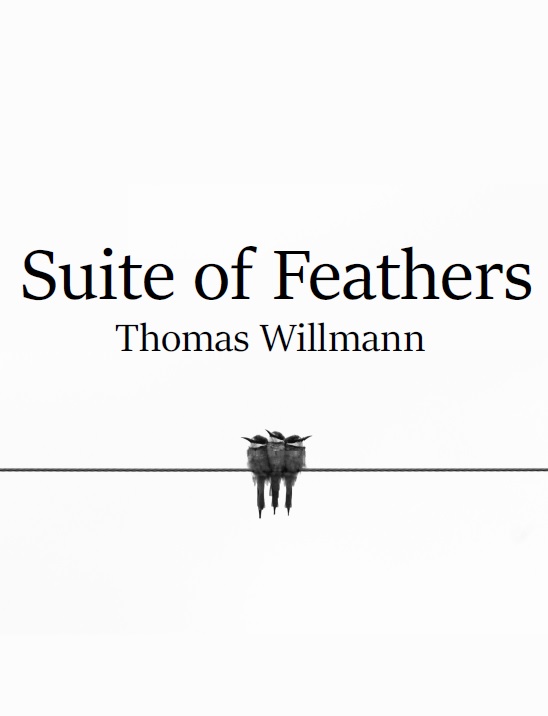
Suite of Feathers
Digital Score and Parts Hard Copy Score – upon request
$115.00
The Argonaut
Grade 5 – 2022
The Argonaut (6’36”) for Strings, Winds, and Percussion. The Argonaut is named after the Greek myth of Jason and his 49 crew-mates (the Argonauts) in their search for the magic embued golden fleece, a symbol of nobility. As with many greek myths, their journey included a band of heroes encountering a number of adventures along the journey. The Argonaut’s name comes from the ship the Argos and the shipbuilder Argus/Argo.
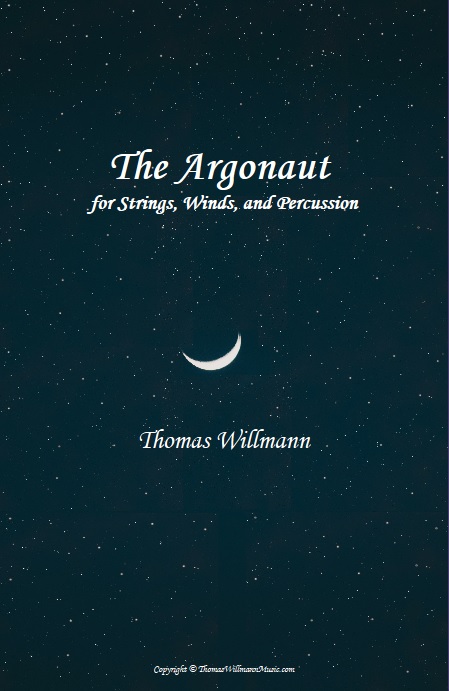
The Argonaut
Digital Score and Parts Hard Copy Score – upon request
$60.00
PHLOX
Grade 3.5 – 2022
PHLOX (4′) for reduced instrumentation Concert Band. The composition is influenced by street bands that mix funk, jam, dance, pop, and techno music into unique instrumentation. The rhythmic element, initiated in the (featured) mallets sets the energy, drive, and style of the piece.

PHLOX
Digital Score and Parts Hard Copy Score – upon request
$40.00
Vasa, Reborn
Grade 4.5 – 2022
Vasa, Reborn (6’20”) for Wind Ensemble. The Vasa is a massive Swedish warship built in the 17th century that sank within 20 minutes of setting sail. The composition imagines what may have been if the impressive vessel did not sink but instead sailed the ocean, perhaps into a multitude of heroic adventures or battles. An alternate history for Vasa is presented in this tone poem.
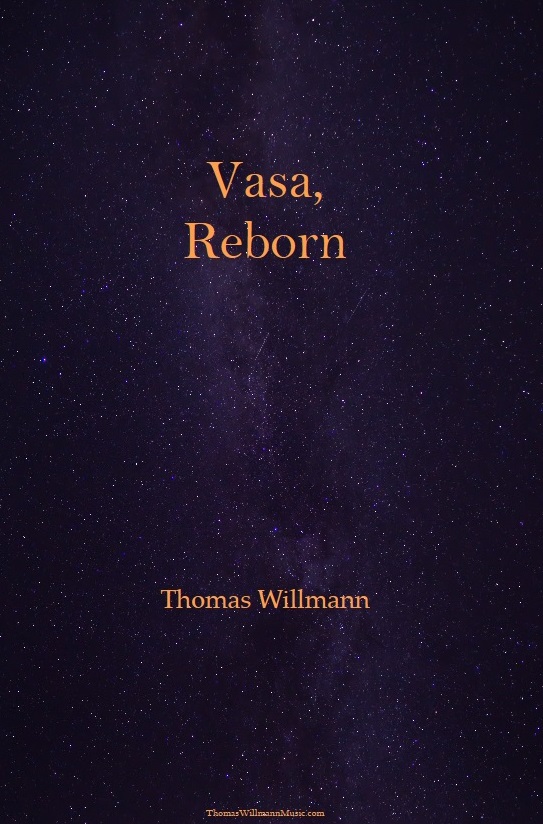
Vasa, Reborn
Digital Score and Parts Hard Copy Score – upon request
$55.00
Stars at Happy Canyon
Grade 3.5/4 – 2022
Stars at Happy Canyon (5′) for Wind Ensemble. The piece is about an area south of Denver, Colorado, special to the composer, and is the second in the series of three (Turquoise Lady on the Llama Ranch and until the very end). It is calm and beautiful with few traffic lights and removed from the busy areas of nearby cities. Nestled in the forest and surrounded by mountains, the stars are exceptionally visible and bright. The music reflects the calm beauty of the canyon and the powerful natural landscape. For performers, focus on the fluidity of the musical lines, creating large lush, dynamic swells and colorful/bright ornamentation. Have several mallet types (brass/rubber, soft-hard) ready for the orchestral bell player. References about love and cookies are written into the clarinet line (*).
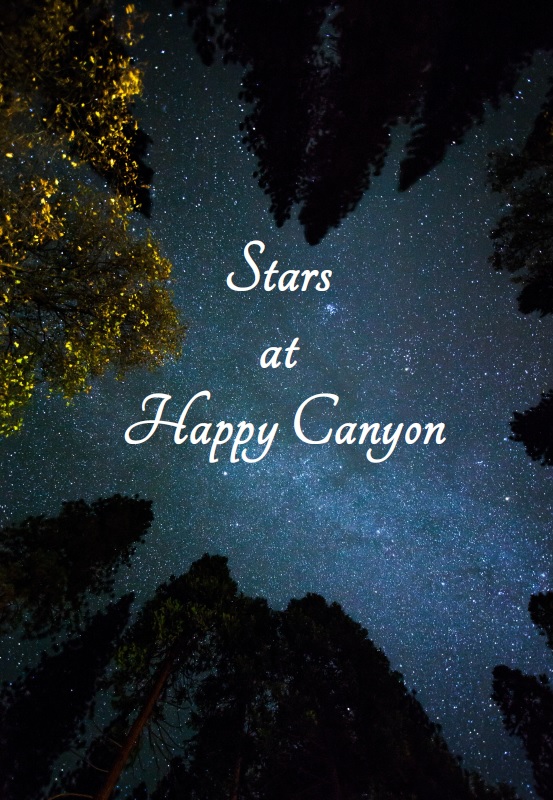
Stars at Happy Canyon
Digital Score and Parts Hard Copy Score – upon request
$40.00
until the very end
Grade 4 – 2022/2023
until the very end (3’50”) for Symphonic Band. This short and rhythmic composition is written as the third and final in the series (Turquoise Lady on the Llama Ranch and Stars at Happy Canyon). The opening tempo is set as a range but should be chosen by the desired end tempo because of the overall accelerando of the piece. Approach the tenuto notes in the opening motif with weight rather than length, and the accents with slight separation. The two main themes based around the meter changes are code written into the music. As the tempo increases consider conducting the 3-meter in 1 and the 4-meter in either 2 or 4. When two of the main theme finally overlap between E and F be adamant about articulations to find the new inner rhythm. Consider having mallet players change mallet hardness throughout the piece (or at E) to ensure an audible part when dynamics increase. *Extended ranges for trumpet 1, alto sax 1, and horn 1.
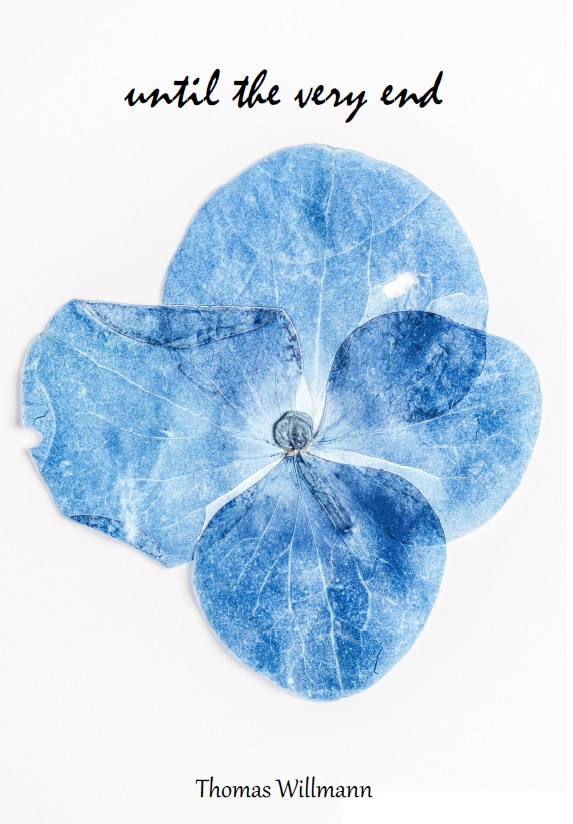
until the very end
Digital Score and Parts Hard Copy Score – upon request
$35.00
Turquoise Lady on the Llama Ranch
Grade 4 – 2022
Turquois Lady on the Llama Ranch (5’26”) for Symphonic Band. The title comes from a turquoise RV on a llama ranch in Sante Fe, New Mexico where the couple (farmer Bill and Robin) allow travelers to book a stay in his 1971 travel trailer (or yert) for a unique experience. The composer visited the ranch in 2019. This is the first in the series of three (Star at Happy Canyon and until the very end). The piece is primarily legato throughout, has frequent but brief moments of rhythmic statements (measure 18), several reoccurring motifs,
and three-against-two sections that should be played without tension. Encourage dynamics contrast to create the phrases that pass between instruments. Two players are recommended for the vibraphone/xylophone part.
The composer highly suggests staying on a llama ranch.
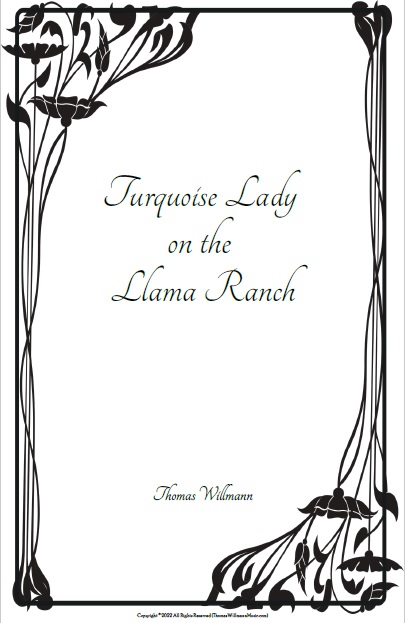
Turquoise Lady on the Llama Ranch
Digital Score and Parts Hard Copy Score – upon request
$45.00
Fire Blossom
Grade 4 – 2022
Fire Blossom (5’08”) for Symphonic Band. Includes an alto saxophone solo, an integral piano part, and five percussionists minimum (nine instruments). Focus on clean 32nd notes, powerful dynamic changes, and forward momentum. The duality of the composition is found in the title and in the music. The music has a charming, delicate solo and its variations, and the powerful heat stems from the orchestration, dynamics, percussion, and heavy rhythmic element.
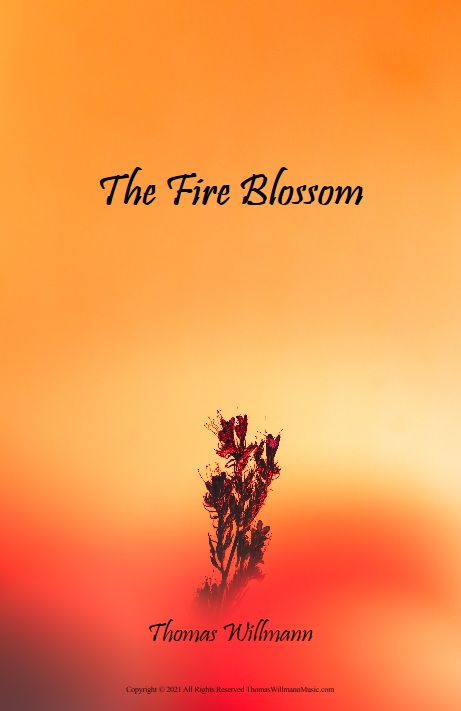
Fire Blossom
Digital Score and Parts Hard Copy Score – upon request
$50.00
Rakastava
Grade 4.5 – 2022
Rakastava (9’38”) arranged for symphonic band. This three-movement work was based on ancient Finnish poems compiled and published in Kanteletar, a book of Finnish-language folk poetry, in 1840 by Elias Lonnrot, and originally written for string orchestra, timpani, and triangle, began life as an unaccompanied work for men’s choir, entered in the 1893 University of Helsinki choral competition. A Finnish-language book was a bold statement: from the Middle Ages, Finland had been part of Sweden, then from 1809, Russia. Like most of the population, Sibelius grew up speaking Swedish. His studies took him to Berlin and Vienna, where he began exploring Finnish legends and poetry. In 1891, he had written to his proudly nationalist fiancé, Aino Järnefelt, that he felt Finnish traditions were represented in folk music and of a…sonorous, remarkably melancholy monotony in all Finnish melodies.
In Rakastava (The Lover), the first song asks where my beloved is (?), describing the joy the poet would feel if his beloved were approaching and how nature’s silence would come to life. The second describes places: clearings, a boulder, heather, the forest, where the beloved had been, and which are fairer from her presence. The third and final song is Good evening and farewell. They embrace, kiss, and the poet bids his beloved good night.
When considering revising Rakastava, Sibelius wrote: ‘If I were to make all these changes, much would be lost of the overall atmosphere. There is some fertile soil in this work. Earth and Finland.’ – Program Notes LSO
.
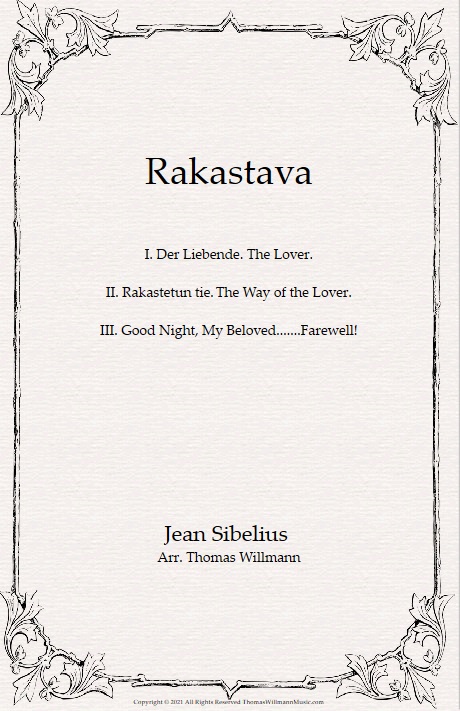
Rakastava (available in United States only)
Digital Score and Parts Hard Copy Score – upon reuest
$55.00
Kairos
Grade 4 – 2021
Kairos (6’02”) for Symphonic Band. The opening trombone quartet harmonic structure is loosely based on the first page(s) of Barber’s Adagio and establishes a chordal structure that reoccurs (before G) in the final pages of the music in different instrumentation and tone. The pedal tones and variety of atypical chordal structures build the ominous mood, while the frenetic movement in the woodwinds adds another source of momentum for energy.
Later, use the hemiola to push the piece towards climactic moments of release as it transitions to the charming melody in pieced fragments at rehearsal D. This belongs to the times in the life of bliss that can often seem surrounded by the trepidation of restless periods. The final bars are chords meant to confirm hope to the wary realist.
The composer imagines Thomas Coles’ painting The Voyage of Life: Manhood.
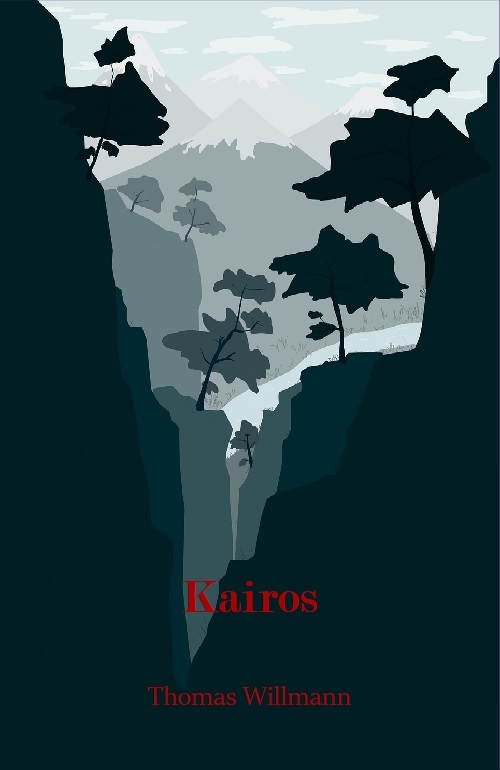
Kairos
Digital Score and Parts Hard Copy Score – upon request
$45.00
Whomp!
Grade 3.5/4 – 2021
NOW AVAILABLE FOR 5-PART FLEX BAND
Whomp! (3’18”) for Concert Band is a dynamic piece with smaller instrumentation. The composition is influenced by street/jam bands that mix funk, dance, pop, and techno music. The instrumentation is particularly accommodating for smaller ensembles. Whomp! is written in Eb Aeolian mode (natural minor) with an array of extended chords. Staccato quarter notes should be separated (but not shortened to an eighth note). The percussion parts can be played by 6-8 musicians. Add stomps or other body percussion to the clapping to create a larger impact during the performance. Consider an Electric Bass instead of the Double Bass to change the mood of the piece and add energy to the solo at measure 59.
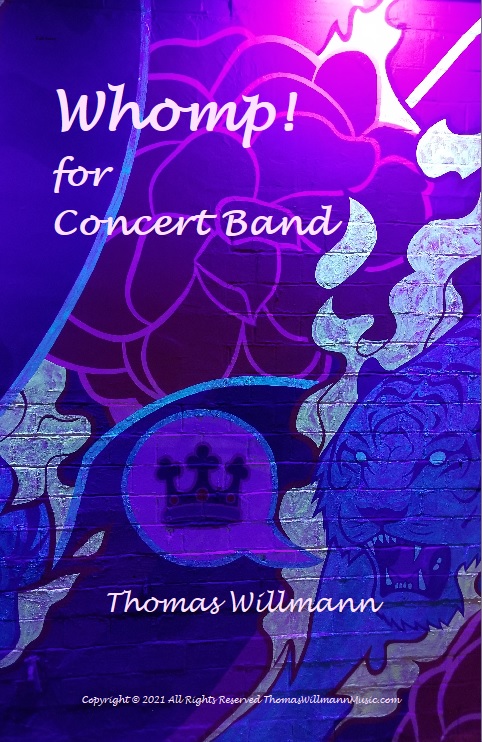
Whomp!
Digital Score and Parts Hard Copy Score – upon request
$45.00
Music For Tokyo
Grade 4.5 – 2019
Music for Tokyo (7’08”) For Wind Band and Percussion. This piece is based on my time traveling through Tokyo and experiencing the culture as an American. Visiting Japan today one can hear a mix of traditional and modern music emanating from every direction. The piece brings a blend of that variety through phrases and sounds representing the daily calm and chaos. Layered, they create a glimpse of daily life in Tokyo. Mid-way through the piece nine separate ideas build to a climax. This represents the Shibuya intersection (the busiest intersection in the world!). The smaller sections represent the beautiful traditional and modern architecture found throughout the city. The composition uses the Insen, In, and Hirajoshi Japanese modes (pentatonic base), traditional Taiko drums, and Quintal harmonies heard in the opening and closing statements. The hectic nature of the piece has moments of repose (section F) representing the meditative temples and gardens found in all over the gigantic city. Solos for Oboe, Trombone, Trumpet, and Flute.
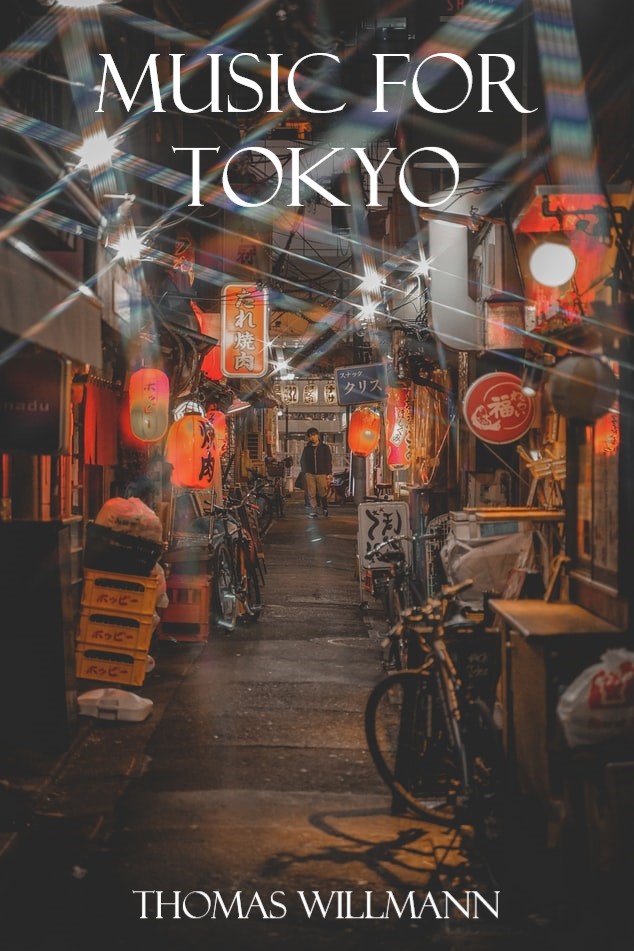
Music for Tokyo
Digital Score and Parts Hard Copy Score – upon request
$70.00
Fables (of Trees)
Grade 4.5/5 – 2020
Fables (12’38”) for Wind Band. The composition incorporates three movements in three different styles that are threaded together with 4 recurring themes and motifs. Each movement is designed after a specific tree from a fable or story. Fables uses Hungarian/Siberian Lore, Buddhism and Hinduism, and the Quran as the idea behind each tree represented. The “Sky-High Tree” is said to hold up the heavens and if climbed, one finds cities, churches, and beautiful landscapes. The “Banyan Tree”, which served to shade Buddha, provides information about longevity, immortality, and existentialism. As per the Qur’an, the torturous “Zaqqum Tree” is found in hell (Jahannam) and grows out of fire. It is a grisly story that describes how the seeds are created from evil deeds and that inhabitants must eat the tree’s fruit which tears their body apart and boils inside the stomach.
Rich with features, solos, and solis throughout all three movements, the piece also highlights unique timbral combinations in the instrumentation. Movement pronunciations: Eh-gig ehr-o fa, Bahn-yahn, and Zah-koom.
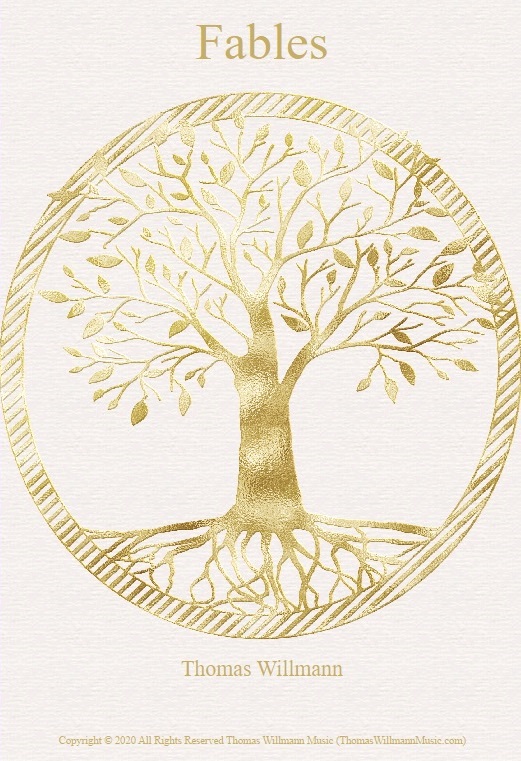
Fables (of Trees)
Digital Score and Parts Hard Copy Score – upon request Individual Movements available
$75.00
Broken Sunlight
Grade 2.5 – 2019
Broken Sunlight (6’38”) For Symphonic Band. The composition is an arch structure (antimetabole). The sections presented at the beginning are revisited in opposite order later in the piece altered by the meter change. The overall voicing and tonalities used are mirrored as well. Short and clustered motifs are scattered through the first two sections as the clarity of aesthetic phrases and tonal harmonies emerge into the dance. The opening motifs are introduced through mathematical intervals, the second set is presented as simple ideas then expanded. The galop begins with a restatement of the two motifs followed by the dance. The dance leads into the original statement with extension, and slowly fades back to the origin.
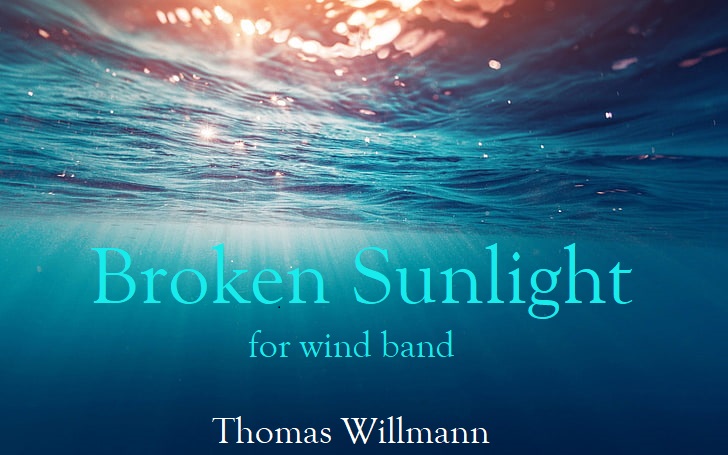
Broken Sunlight
Digital Score and Parts Hard Copy Score – upon request
$35.00
Marengo Caves
Grade .05 – 2018
Marengo Caves (1’41”) This Beginning Band piece is written after a visit to a Southern Indiana Caves system of the same name. The dark and mysterious nature of a cave is portrayed through the G minor key and eerie percussion parts. Ten percussion parts, simple rhythms, and some new sounds to introduce to the eager musicians will make it easy to enjoy. **Free Digital copy for all Title 1 Public, and Charter School Teachers.
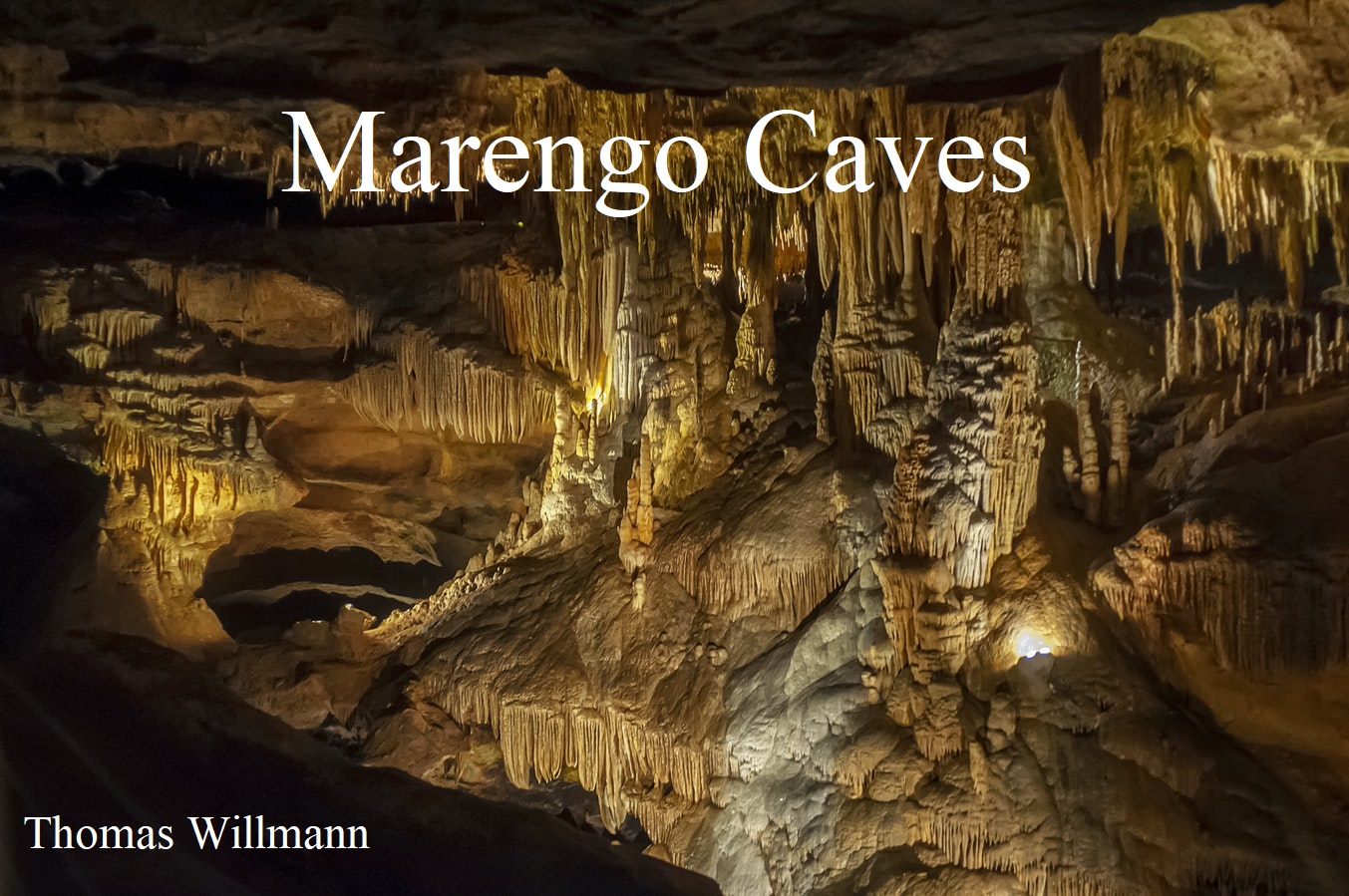
Pikes Peak Promenade
Digital Score and Parts
$20.00
Pikes Peak Promenade
Grade .05 – 2018
Pikes Peak Promenade (1’36”) This Beginning Band/Year 2 piece is a March Promenade that is based on the towering mountain in Colorado Springs. The mountain is one of the most accessible and traveled in the world as well as the inspiration for Bates’ “America, The Beautiful”. Seven percussion parts, less than an octave range for brass, and simple march melodies that are catchy the audience will enjoy. **Free Digital copy for all Title 1 Public, and Charter School Teachers.
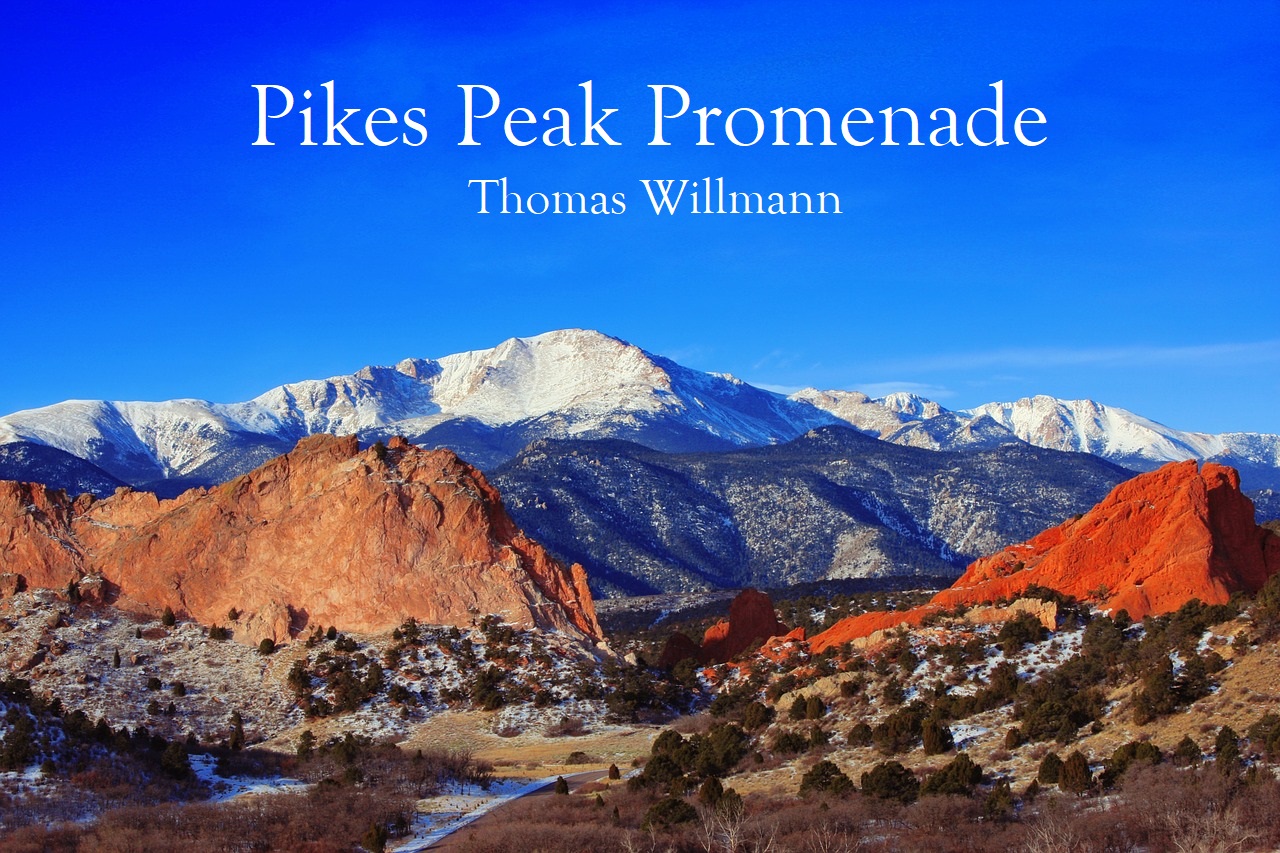
Pikes Peak Promenade
Digital Score and Parts
$20.00